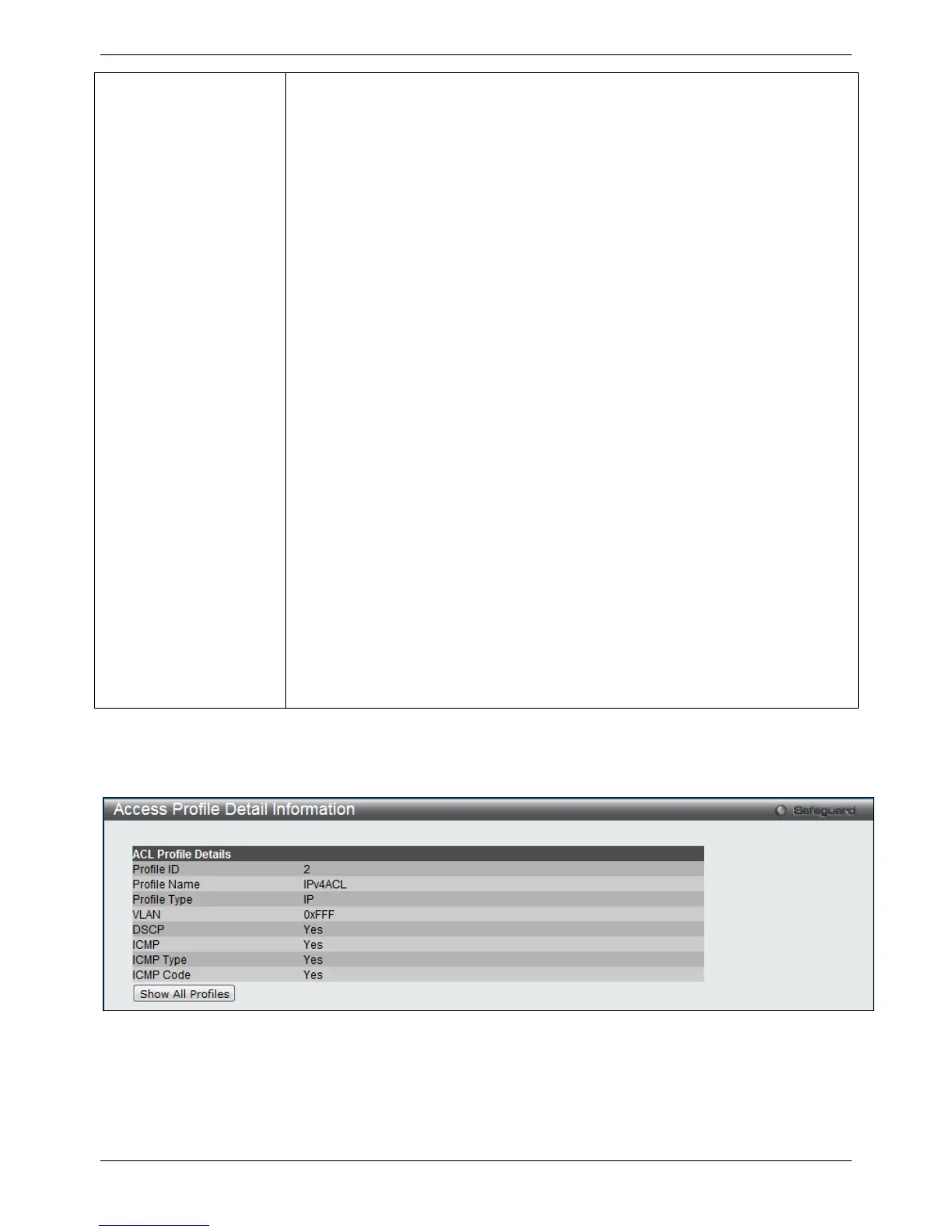specify Code to further specify that the access profile will apply an ICMP code value.
Select IGMP to instruct the Switch to examine the Internet Group Management
Protocol (IGMP) field in each frame's header.
Select Type to further specify that the access profile will apply an IGMP type value.
Select TCP to use the TCP port number contained in an incoming packet as the
forwarding criterion. Selecting TCP requires that you specify a source port mask
and/or a destination port mask.
Source Port Mask - Specify a TCP port mask for the source port in hex form (hex 0x0-
0xffff), which you wish to filter.
Destination Port Mask - Specify a TCP port mask for the destination port in hex form
(hex 0x0-0xffff) which you wish to filter.
TCP Flag Bits - The user may also identify which flag bits to filter. Flag bits are parts
of a packet that determine what to do with the packet. The user may filter packets by
filtering certain flag bits within the packets, by checking the boxes corresponding to
the flag bits of the TCP field. The user may choose among URG (urgent), ACK
(acknowledgement), PSH (push), RST (reset), SYN (synchronize) and FIN (finish), or
tick the Check All box to select all of them.
Select UDP to use the UDP port number contained in an incoming packet as the
forwarding criterion. Selecting UDP requires that you specify a source port mask
and/or a destination port mask.
Source Port Mask - Specify a UDP port mask for the source port in hex form (hex
0x0-0xffff).
Destination Port Mask - Specify a UDP port mask for the destination port in hex form
(hex 0x0-0xffff).
Select Protocol ID - Enter a value defining the protocol ID in the packet header to
mask. Specify the protocol ID mask in hex form (hex 0x0-0xff.
Protocol ID Mask - Specify that the rule applies to the IP protocol ID traffic.
User Define - Specify the Layer 4 part mask
Click the Select button to select an ACL type. Click the Create button to create a profile.
Click the <<Back button to discard the changes made and return to the previous page.
After clicking the Show Details button, the following page will appear:
Figure 7-9 Access Profile Detail Information window (IPv4 ACL)
Click the Show All Profiles button to navigate back to the Access Profile List Page.
After clicking the Add/View Rules button, the following page will appear:

